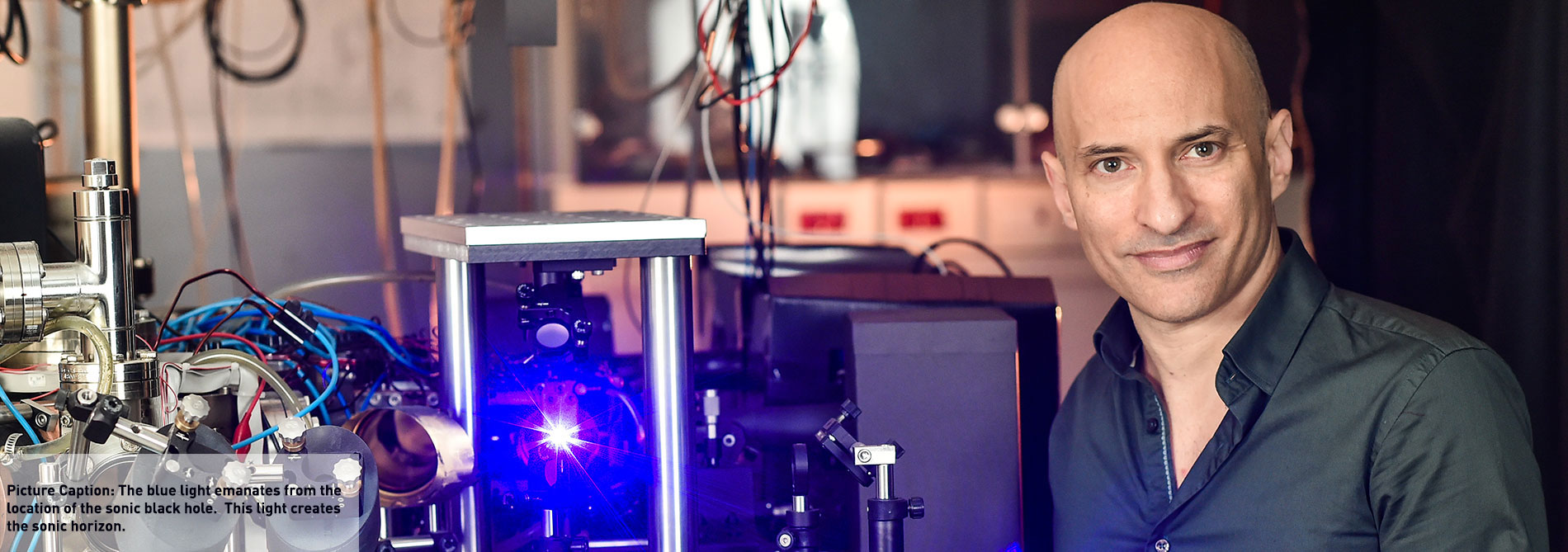Initially it was considered that its gravitational pull is so strong, not even light can escape it. Stephen Hawking is famous for showing that this isn't actually true. Let's first know about the black hole clearly...
Black holes are not actually black. Instead, these gravitational sinks are thought to emit radiation that causes them to shrink and eventually disappear. This phenomenon, one of the weirdest things about black holes, was predicted by Stephen Hawking more than 40 years ago.
 |
| An artists’ impression of a black hole. Astronomers are in the process of piecing together the first pictures captured of a black hole.Source:AFP |
After seven years of often solitary study, Jeff Steinhauer, an experimental physicist, the Technion-Israel Institute of Technology in Haifa, has created an artificial black hole that seems to emit such ‘Hawking radiation’ on its own, from quantum fluctuations that emerge from its experimental set-up.
 |
| How microwaves get sucked into the artificial black hole Credits:Qiang Cheng/Tie Jun Cui |
A feature called the event horizon plays a central role in both Hawking radiation and the new model system. At a real black hole, the space-time outside the event horizon may be distorted by the intense gravity, but the distortion is relatively limited. Inside the event horizon, however, space-time is stretched at a rate that's faster than the speed of light. Photons can't escape because the space-time they occupy is getting stretched away from the event horizon faster than the photon can move.
It was in the mid-1970s that Hawking, a theoretical physicist at the University of Cambridge, UK, discovered that the event horizon of a black hole — the surface from which nothing, including light, can escape — should have peculiar consequences for physics.
Even the emptiest region of space teems with fluctuations in energy fields, causing photon pairs to appear continuously, only to immediately destroy each other. But, just as Pinocchio turned from a puppet into a boy, these ‘virtual’ photons could become real particles if the event horizon separated them before they could annihilate each other. One photon would fall inside the event horizon and the other would escape into outer space.

This, Hawking showed, causes black holes both to radiate — albeit extremely feebly — and to ultimately shrink and vanish, because the particle that falls inside always has a ‘negative energy’ that depletes the black hole. Most controversially, Hawking also suggested that a black hole’s disappearance destroys all information about objects that have fallen into it, contradicting the accepted wisdom that the total amount of information in the Universe stays constant.
A black hole for sound
Steinhauer creates a Bose-Einstein condensate by chilling a cloud of rubidium atoms down to where the atoms occupy the same quantum state. Rather than light or particles, however, Steinhauer focuses on photons, which are individual quanta of vibrational energy.
To create an event horizon, Steinhauer first stretches the condensate out so that it behaves like a one-dimensional system. Then, he uses lasers to control the flow of the condensate, creating a critical transition. On one side of the transition, the atoms flow at speeds that are below the speed of sound in the condensate. On the other side of the transition, however, atoms flow away at faster than the speed of sound. Any photons that are generated on that side of the transition can never cross it, since the condensate travels away from it faster than they can propagate.
With the groundwork complete, Steinhauer turns to measuring the correlation between phonons densities on either side of his event horizon.
But the measurements work. Phonons on opposite sides of the event horizon show a strong correlation in density that is the equivalent of entanglement. And these entangled pairs of phonons cover a broad spectrum of energy, exactly as predicted by Hawking's work.
 |
| Bose-Einstein Condensate |
 |
| Prof. Steinhauer Jeff |
The implications are significant, and Steinhauer puts them succinctly: “The measurement reported here verifies Hawking’s calculation, which is viewed as a milestone in the quest for quantum gravity. The observation of Hawking radiation and its entanglement confirms important elements in the discussion of information loss in a real black hole.
Fact 2: Black holes are only dangerous if you get too close.
Fact 3: The Nearest Black Hole to the earth is 1600 light years away.
Fact 4: The Black Holes are not funnel-shaped;they are spheres
Fact 5: Black holes can generate energy more efficiently than our sun
Source:Books,Internet,Nasa,
Thanks to: Prof.Jeff Steinhauer(The Technion Department of Physics)







